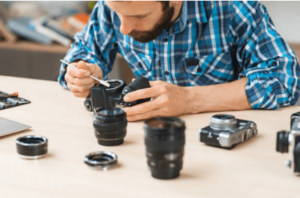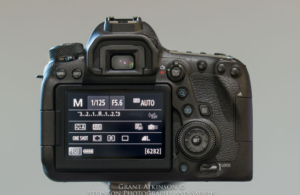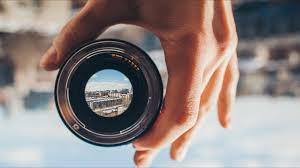How Do Phone Cameras Compare to Digital Cameras in Terms of Quality
In recent years, phone cameras have undergone significant improvements, prompting many to question how they stack up against traditional digital cameras. With advancements in technology, the lines between these two types of cameras have blurred, leading to an ongoing debate about which one offers superior quality. This article delves into various aspects of camera quality to provide a comprehensive comparison between phone cameras and digital cameras.
1. Evolution of Phone Cameras
Phone cameras have come a long way since their inception. The early models were rudimentary, offering low-resolution images with poor color accuracy. However, modern smartphones are equipped with high-resolution sensors, advanced software, and multiple lenses that enhance image quality significantly.
Key Milestones in Phone Camera Development:
- Introduction of multi-lens systems
- Implementation of AI and machine learning
- Integration of advanced image stabilization technologies
2. Sensor Size and Image Quality
Sensor size plays a crucial role in determining image quality. Larger sensors capture more light, resulting in better image quality, especially in low-light conditions. Digital cameras typically have larger sensors compared to phone cameras.
Advantages of Larger Sensors:
- Improved low-light performance
- Greater depth of field control
- Higher dynamic range
Phone cameras, despite their smaller sensors, utilize computational photography to compensate for this limitation. Techniques such as HDR, night mode, and image stacking help enhance the quality of images produced by smartphones.
3. Lens Quality and Versatility
Lens quality is another critical factor affecting image quality. Digital cameras often feature interchangeable lenses, allowing photographers to choose the best lens for different scenarios. High-quality lenses with superior optics can produce sharper images with minimal distortion.
Benefits of Interchangeable Lenses:
- Flexibility to adapt to various shooting conditions
- Higher optical quality
- Ability to achieve different focal lengths and apertures
On the other hand, phone cameras have fixed lenses but often come with multiple lenses (wide, ultra-wide, telephoto) that provide a degree of versatility. While these lenses cannot match the optical quality of professional lenses, they offer a convenient solution for casual photographers.
4. Computational Photography
One of the biggest advantages of phone cameras is the integration of computational photography. This technology leverages powerful processors and algorithms to enhance image quality beyond the limitations of hardware.
Computational Photography Features:
- HDR (High Dynamic Range): Combines multiple exposures to create images with balanced highlights and shadows.
- Portrait Mode: Uses depth information to simulate a shallow depth of field, creating a bokeh effect.
- Night Mode: Captures multiple frames with varying exposures to produce bright and clear images in low-light conditions.
Digital cameras, while offering superior hardware, lack the same level of integrated computational photography features. Photographers often rely on post-processing software to achieve similar results.
5. Manual Controls and User Experience
Manual controls are essential for photographers who want to have complete control over their shots. Digital cameras provide extensive manual controls, including adjustments for ISO, shutter speed, aperture, and focus. This level of control allows for creative freedom and precise adjustments to capture the perfect shot.
Manual Control Options in Digital Cameras:
- Full manual mode (M)
- Aperture priority (A/Av)
- Shutter priority (S/Tv)
- Custom white balance settings
While phone cameras offer some manual controls, they are often limited compared to digital cameras. However, smartphone apps have bridged this gap, providing advanced manual control options to enthusiasts who seek more control over their images.
6. Image Processing and Post-Production
The quality of the final image is not just determined by the camera’s hardware but also by the image processing capabilities. Digital cameras produce RAW files, which are uncompressed and retain all the image data captured by the sensor. These files provide greater flexibility for post-production, allowing photographers to fine-tune exposure, color balance, and sharpness.
Benefits of RAW Files:
- Greater control over image editing
- Higher image quality
- Ability to recover details from shadows and highlights
Phone cameras typically produce JPEG or HEIF files, which are compressed and processed in-camera. While these files are more convenient for sharing and storage, they offer less flexibility for post-processing compared to RAW files.
7. Portability and Convenience
One of the most significant advantages of phone cameras is their portability. Smartphones are compact, lightweight, and always on hand, making them ideal for capturing spontaneous moments. This convenience has made phone cameras the go-to choice for casual photographers and social media enthusiasts.
Portability Benefits of Phone Cameras:
- Always available for quick shots
- Easy to carry and handle
- Integrated with social media for instant sharing
Digital cameras, especially DSLRs and mirrorless models, are bulkier and require additional equipment such as lenses and tripods. While this gear enhances the quality and versatility of the shots, it also makes digital cameras less convenient for everyday use.
8. Professional Use and Market Trends
Professional photographers often prefer digital cameras due to their superior image quality, extensive manual controls, and versatility. The ability to use high-quality lenses and the availability of professional-grade features make digital cameras the preferred choice for commercial, portrait, and landscape photography.
Market Trends:
- Increasing use of mirrorless cameras among professionals
- Growth of smartphone photography in social media and content creation
- Advancements in smartphone camera technology driving competition
Despite the rise of phone cameras, digital cameras continue to hold a strong position in the professional market. Many photographers use both types of cameras, leveraging the strengths of each for different situations.
9. Price and Accessibility
Price is a significant factor when comparing phone cameras and digital cameras. High-end digital cameras and lenses can be quite expensive, often costing thousands of dollars. This investment is justified for professional photographers who require top-notch quality and features.
Price Comparison:
- Entry-level digital cameras: $300-$800
- Mid-range digital cameras: $800-$2000
- High-end digital cameras: $2000 and above
- High-end smartphones: $800-$1500
Phone cameras, being part of a multifunctional device, offer a more cost-effective solution for most users. High-end smartphones provide excellent camera performance along with other features, making them a popular choice for everyday photography.
10. Future of Camera Technology
The future of camera technology is exciting, with ongoing advancements in both phone cameras and digital cameras. Manufacturers are continuously pushing the boundaries to improve image quality, user experience, and technological capabilities.
Future Trends to Watch:
- Integration of AI and machine learning in camera technology
- Development of new sensor technologies
- Enhancements in computational photography
- Growth of 5G enabling real-time image processing and sharing
As technology evolves, the gap between phone cameras and digital cameras may continue to narrow. Both types of cameras will likely coexist, each serving different needs and preferences of photographers.
Conclusion
In conclusion, phone cameras and digital cameras each have their unique strengths and weaknesses. Phone cameras excel in portability, convenience, and computational photography, making them ideal for everyday use and social media. Digital cameras, with their larger sensors, superior lens quality, and extensive manual controls, remain the preferred choice for professional and serious photographers.
Ultimately, the choice between a phone camera and a digital camera depends on your specific needs and preferences. Whether you prioritize convenience and portability or superior image quality and creative control, both types of cameras offer impressive capabilities to capture stunning images. As technology continues to advance, we can expect even more exciting developments in the world of photography.
RELATED POSTS

How Can You Fix Focus Issues in a Camera Lens That Consistently Produces Soft or Blurry Images?

How Photographers Can Optimize Their Use of Multifunctional Control Dials for Faster Adjustments ?

What are the essential features to look for when buying a lens?

